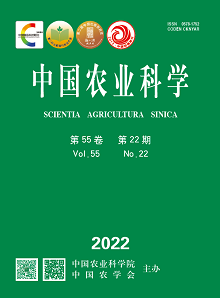【Objective】 The fruit aroma components and content as well as the expression of key genes between peach parents and hybrid progenies were studied to reveal the variation characteristics of peach fruit aroma components and to clear the main components and changes of peach fruit aroma components between parents and hybrid progenies, so as to provide data support for further exploring the genetic and regulatory mechanism of fruit aroma and breeding of peach parents and hybrid progeny.【Method】 In this study, the volatile components and content of peach fruit of 21shiji and Jiucui peach as well as their hybrid progenies were analyzed by SPME-GC-MS, and the expression levels of genes related to ester synthesis (PpAAT1) and ester hydrolysis (PpCXE1) were analyzed by real-time PCR. In addition, the effects on volatile components and content of peach fruits by 1-MCP and ethylene treatments which used to change fruit ripeness were analyzed.【Result】 A total of 125 volatile compounds were detected in hybrid parents and progenies, including alcohols, lactones, acids, terpenoids, ketones, alkanes, alkenes, and esters. The results showed that the number of volatile components of the hybrids was lower than that of the parent Jiucui except for Shijizhixing, but the volatile components of 55.56% progenies were higher than that of these two parents. Esters were the most abundant volatile components detected in different peach fruits, accounting for more than 50.98% of the total volatile content. The contents of esters of these two parents 21shiji and Jiucui accounted for 60.24% and 43.45% of the total volatiles, respectively. Except hy-7 (38.71%), the esters in other hybrids were higher than that in Jiucui peach. Alkanes were also the main volatile components detected in this experiment. The proportion of alkanes in the total volatile content of each hybrid was lower than that of the parent Jiucui, and 66.67% of the hybrid was lower than that of the parent 21shiji. Lactones were not detected in the two parents, but were detected in some progenies, such as Shijizhixing, hy-1, hy-9, hy-16, and hy-18, and the content was significantly higher than that of the two parents. Trans-3-hexene acetate, hexyl acetate, ethyl caprylate, linalool, and dihydrogen -β-ionone were the main components of peach fruit aroma (OAVs > 1). The trans-3-hexene acetate, one of the main components contributing to peach aroma, was not detected in parents, but was detected in 77.78% progenies, and the aroma intensity value was above 1.29, and the highest was 5.04 of Shijizhixing. And γ -decalactone, the main volatile compound of peach fruit, was detected only in 3 progenies. According to the OAVs summing distribution, 21shiji and most of the hybrid progenies were mainly fruity type, while only Jiucui and hy-7 were floral type. The hybrid progeny Shijizhixing owned very strong aroma with both fruity and floral type characteristics, and its OAVs values were significantly higher than both parents and other hybrids. Furthermore, the results showed that 1-MCP inhibited the synthesis of esters and lactones in fruit, while the exogenous ethylene accelerated fruit ripening. And the exogenous ethylene promoted the release of esters in advance, and the content of esters reached the highest on the second day. Moreover, lactones were not detected on the 1-3 days after treatment, and the contents of lactones in the three groups showed an increasing from 4 to 10 days. On the 10th day, the contents of lactones in the ethylene treatment group and 1-MCP treatment group were significantly lower than those in the control group.【Conclusion】 The type, quantity, and content of volatile components were significantly different between 21shiji, Jiucui, and their hybrid progenies. The content of esters and lactones in hybrid progenies were significantly higher than that of their parents. The fruit aroma characteristics of most hybrid progenies were consistent with that of the parent 21shiji, which was fruity type. Some of them had the same floral type as their parent Jiucui, while some of their hybrid progenies was both floral and fruity type. Compared with the control group, 1-MCP treatment inhibited the synthesis of esters and lactones, and weakened the fruit aroma. However, exogenous ethylene promoted the early release of esters and the highest content of esters was not significantly different from that in the control group, but significantly reduced the content of lactones in fruits.









